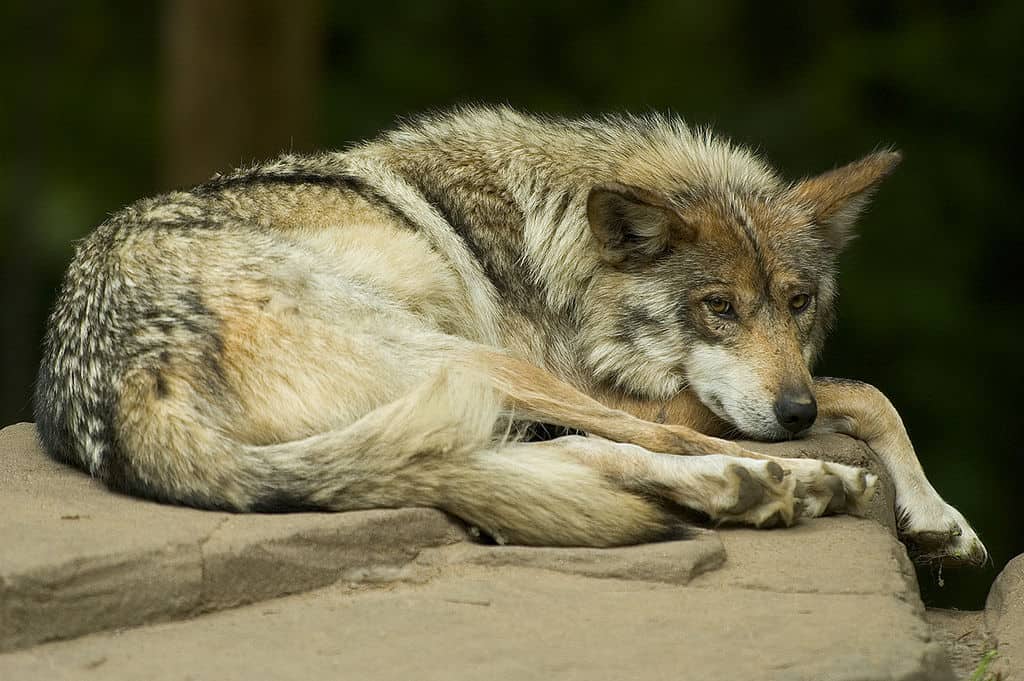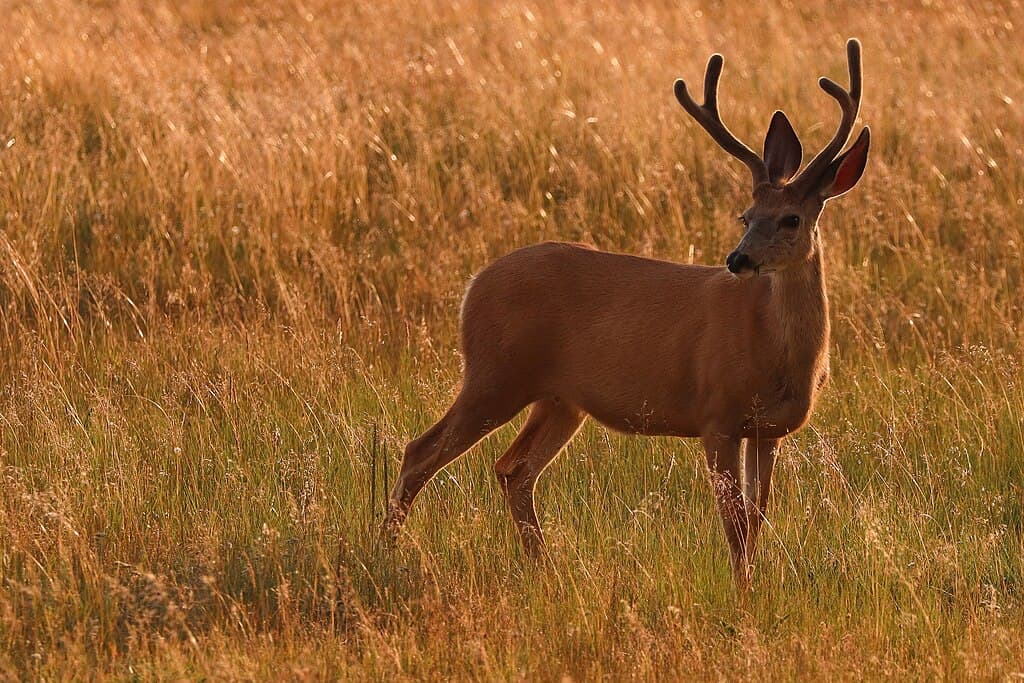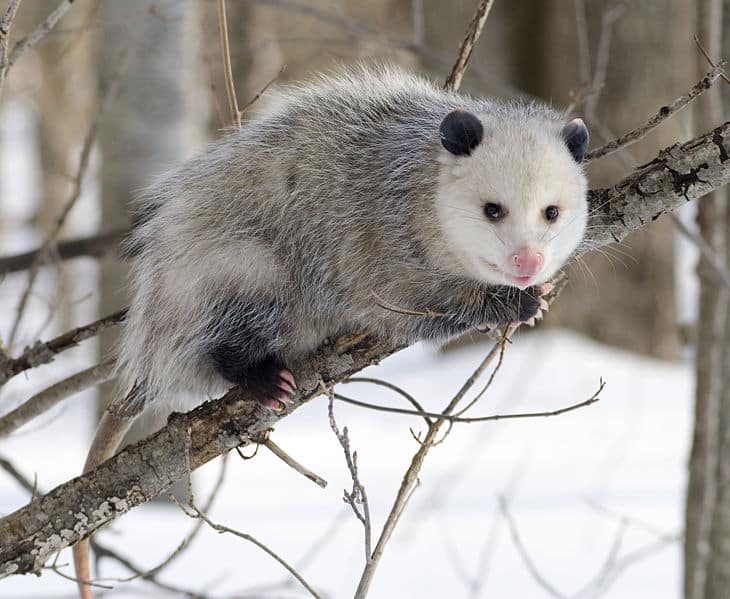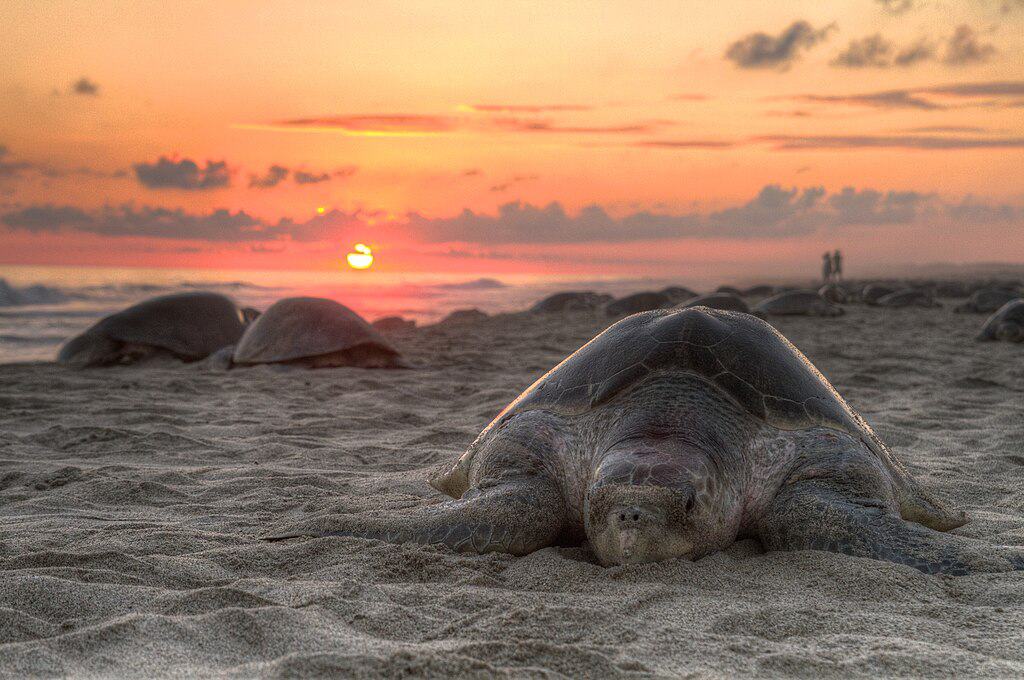Mexico is among the world’s most diverse nations when it comes to animals and wildlife. Teetering between mild and tropical America, the Mexican biological system is a rich mix of deserts and shrublands, prairies, calm timberlands, tropical woods, mountains, and wetlands.
While Mexico might be wealthy in local species, it’s likewise a significant objective for birds and bugs moving from the north. The authority public creature of Mexico is the brilliant bird, and it is included as a substantial image of Mexican culture tracing back to Pre-Columbian times. A picture of the bright bird eating a poisonous snake even enhances the nation’s banner.
Its rich public parks are the best spot to find Mexico’s different creatures. The Bassaseachic Falls National Park is situated at the focal point of the Sierra Madre Occidental Mountain range inside the province of Chihuahua. The mountains, valleys, and rich backwoods are home to a different scope of extraordinary wild creatures.
The Palenque National Park, situated among Mayan ruins in the southern province of Chiapas, is home to many birds and arboreal evolved creatures in the thick foliage of the encompassing rainforests.
Click below to jump to a section on animals in Mexico:
Mexican Wolf

Sharp detects substantial canine teeth, strong jaws, and the capacity to seek after prey at 60 km each hour prepare the dim wolf well for a brutal lifestyle. A typical northern male, including the ragged half-meter-long tail, might be around 2 meters long. Standing 76 cm tall at the shoulder, Mexican wolves weigh about 45 kg, yet their weight goes from 14 to 65 kilograms, depending on the geographic region.
Females are generally around 20% more modest than guys. The giant wolves are found in west-focal Canada, Alaska, and northern Asia, and the littlest will often be close to the southern finish of their dissemination. The fur on the chest area, however typically dark, might be brown, rosy, dark, or whitish, while the underparts and legs are generally yellow-white. Light-hued wolves are ordinary in Arctic locales.
Dark wolves usually live in packs of up to two dozen people; packs it is generally normal to number 6 to 10. A group is a family bunch comprising a grown-up rearing pair (the dominant man and alpha female) and their posterity of different ages. The capacity of wolves to frame solid social bonds with each other makes the wolf pack conceivable. A pecking order is laid inside the pack, which controls everything.
The highly confident man and alpha females persistently advocate for themselves over their subordinates, and they guide the exercises of the gathering. The female prevails in jobs like consideration and safeguarding little guys, while the male prevails in scavenging, food provision, and movements related tooth those exercises. The two genders are highly dynamic in going after and killing prey, yet throughout the mid-year, chases are frequently led alone.
A pack’s domain can be 80 to 3,000 square km (31 to 1,200 square miles), contingent upon prey overflow and enthusiastically guarded against adjoining bags. Wolves speak with each other by visual flagging (look, body position, tail position), vocalizations, and aroma stamping. Crying assists the load with keeping in touch and appears to reinforce social bonds among pack individuals.
Alongside wailing, stamping of an area with pee and dung tells adjoining packs they shouldn’t interrupt. Occupant packs often kill interlopers, yet in certain conditions; they are acknowledged.
Where to find Mexican Wolves in Mexico
They are primarily found in woodland mountains alongside other animals in Mexico.
Raccoon

The raccoon is a local well-evolved creature, estimated around 3 feet long, including its 12-inch, thick, ringed tail. Since their rear legs are longer than the front legs, raccoons look slouched when they walk or run. Each of their front feet has five capable toes, permitting raccoons to get a handle on and control food and different things.
Adult raccoons gauge 15 to 40 pounds, their weight being a consequence of hereditary qualities, age, accessible food, and living space area. Guys have tipped the scales at the north of 60 pounds. A raccoon in the wild will presumably weigh not exactly the urbanized raccoon that has figured out how to live on gifts, pet food, and trash bin extras. Raccoons lean toward backwoods regions, almost a stream or water source, yet have adjusted to different conditions throughout Washington.
Raccoon populaces can get huge in metropolitan regions, attributable to hunting and catching limitations, hardly any hunters, and human-provided food. Raccoons will eat nearly anything. However, they are especially enamored with animals found in water-shellfishes, crawfish, frogs, fish, and snails. Raccoons likewise eat bugs, slugs, dead creatures, birds, bird eggs, organic products, vegetables, nuts, and seeds. Around people, raccoons frequently eat trash and pet food.
Albeit not extraordinary trackers, raccoons can get youthful gophers, squirrels, mice, and rodents. Besides, during the rearing season and for females with young, raccoons are alone. People will eat together, assuming that much food is accessible in the space. Raccoons are probably the most artful omnivores on the planet, and they will eat pretty much anything they can get their paws on.
TypicAlmost 50% of their eating routine comprises shellfish, bugs, mollusks, and different spineless creatures. An enormous piece likewise contains plant material; afterward, a more modest part contains little creatures. They lean toward benefiting from crabs and other simple-to-get prey, as opposed to birds or warm-blooded animals.
They will usually scrutinize trash to track down eatable things in metropolitan conditions. Raccoons match up just during the reproducing season, and mating happens as soon as January to as late as June. The pinnacle mating period is March to April. Following a 65-day incubation period, a few packs are conceived.
The units stay in the cave until they are around seven weeks old when they can walk, run, climb, and start to involve substitute nooks. At eight to ten weeks old, the youth consistently go with their mom outside the cave and scrounge for themselves.
Where to find Raccoons in Mexico
These intelligent little well-evolved creatures can endure pretty much any place. Preceding urbanization, their inclined toward everyday living spaces were forests, ideally regions with water sources where they could chase after scavenger animals in Mexico.
These days, the urban wilderness furnishes a flourishing populace of raccoons with all they need to get by. Populaces have flourished with the presentation of urban communities, and as long as they have someplace to climb and get away from risk and someplace to conceive offspring, they are all set!
White-tailed Deer

It is also known as Virginia deer, is medium-sized and native to North America, Central America, and South America. White-tailed deer got its name due to the white hairs under the tail and rump. White-tailed deer have different sizes. Its body is found to be more significant in cold climates and agricultural soil but more petite in deserts and tropics. It has a reddish-brown to grayish-brown body and large ears.
They love to live in open areas and forests. During summer, white-tailed deer are found in forest areas where the food is present more, and in winter, they live in yards where they get proper nutrition and protection from cold winds. They reproduce quickly and are capable of doubling their number in a year. During the start of copulation season in November and December, a significant part of the romance is done on the run; numerous guys attempt to stay aware of the rapid female deer.
The copulation process is speedy and matter-of-fact. The buck watches and mates with female deer for the day before looking for one more female deer in heat. Females become regional before conceiving offspring. The incubation time frame midpoint is two hundred and two days; same-looking ones or twins are often created. In the jungles, proliferation might happen all year. Moms now and again bring up little girls to maturation and afterward withdraw, passing on their home reach to the little girls.
White-followed deer might live separated from one another in summer yet may frame enormous groups in the winter season on open grasslands or in timberlands. They stomp on the down areas of the snow in a space known as a “deer yard.” Food incorporates twigs, organic products, leaves, nuts, lichens, and parasites. White-followed deer promptly go to plantations and other developed vegetation when accessible.
In metropolitan regions, these deer might become dangerous nuisances. The white-followed deer was previously enormously decreased in reach and overflowed by unlimited hunting. It had been re-established to a tremendous downpour by game-administration measures throughout North America by the mid-20th century.
In today’s time, the white-tailed deer is a famous game creature. White-tailed deer are herbivores or vegetarians as they feed on grasses and herbs, leafy material from plants and wood. As in the winter season, there is a shortage of food; they change their diet to buds and twigs.
Where to find White tailed Deer in Mexico
They mostly live in croplands, hardwoods, pasturelands, and brushlands with other animals in Mexico.
Flying Squirrel

As the name implies, these squirrels do not fly like a bird in the sky or like a bat flies in the sky. They generally drift or glide in the air, which seems like they pass. These animals are omnivorous, so they quickly eat insects, flowers, and nuts, which are their favorite. They are mainly active at night and,d usually search for food at night.
They take an angle of 180 degrees when gliding in the air. These animals have fur on their body which is born in color. The back fur of their body is black, and the stomach fur is white. A few kinds of these animals have little contrasts in fur tone. One of the essential attractive things in these squirrels is their big dark eyes.
The eyes of these squirrels have a good capacity for light, which assists these creatures with seeing their environmental factors as they chase around evening time. Their hairs are long, with tiny feet and flat tails, and their stubbles help them abstain when running at night for food.
They have very sharp teeth like other squirrels, which helps them eat nuts and chew walnuts. They are around 9- 14 inches long with a four-inch tail in adult squirrels, and flying squirrels weigh about 2-8 ounces. The red and white giants are the two major species that are the largest.
Their body is around 23 inches long, and their tail is about 24 inches long. This squirrel’s weight is about 10 pounds, and it is one of the smallest squirrels in the world. Generally, they are 7 inches long, including the tail, and weigh around 5 ounces.
Where to find flying squirrels in Mexico
It is found in small and isolated populations in Mexico, alongside many other animals.
Opossum

Opossums are creatures that started in South America and are accepted to have been placed in North America during the Incomparable American Trade, which is the point at which the mainlands associated and is assumed to have happened around 2.7 million quite a while back.
It is otherwise called the average opossum. Like different marsupials, these creatures have a pocket where children are kept while they mature. Opossums have 50 teeth, more than other land-based warm-blooded creatures in North America. Even though they share a comparative name, opossums of North, Focal, and South America are not connected with arboreal marsupials of the suborder Phalangeriformes, which are generally alluded to as possums yet are endemic toward the Eastern Half of the globe.
A warm-blooded animal known as a marsupial, a wholly developed opossum is generally the size of a house cat. Overall, possums, as they are likewise known, measure roughly 2.5 feet long from nose to tail and weigh 8.8 and 13.2 pounds. Generally dark in variety, these creatures have white appearances and long, pointed beaks.
Inside their mouths are 50 teeth – more than another land-based well, evolved creatures in North America. As well as having four short appendages, they use specific tails in various ways. Since these rodents, like bottoms, are fit for holding onto things, they are considered prehensile. Because of this component, opossums can utilize their seats to assist with keeping their equilibrium, support climbing trees, and clutch settling materials while climbing.
Youthful creatures utilize their prehensile tails to grip onto their moms’ backs while being hefted around. As opposed to prevalent thinking, notwithstanding, opossums don’t balance topsy turvy from trees by their tails like bats. These vertebrates’ rear legs additionally highlight opposable thumbs, which permit them to clutch branches successfully and significantly more. Guys usually are marginally more extensive than females, and they additionally have more giant canine teeth and will, more often than not, be altogether heavier.
Where to find Opossums in Mexico
It is found in primary and secondary forests with many animals in Mexico.
Summary of Animals in Mexico
The mountains, valleys, and rich backwoods are home to a different scope of extraordinary wild creatures. The Palenque National Park, situated among Mayan ruins in the southern province of Chiapas, is home to many birds and arboreal evolved animals in the thick foliage of the encompassing rainforests.
Mexico is among the world’s most varied nations for intriguing creatures and untamed life.
Riding the line between mild and tropical America, the Mexican biological system is a rich mix of deserts and shrublands, prairies, calm timberlands, tropical woods, mountains, and wetlands. While Mexico might be wealthy in local species, it’s likewise a significant objective for birds and bugs moving from the north. The authority public creature of Mexico is the brilliant bird.
It is included all over as a significant image of Mexican culture tracing back to Pre-Columbian times. A picture of the brilliant bird eating a poisonous snake even enhances the nation’s banner. Its rich public parks are the best spot to find Mexico’s different creatures. The Bassaseachic Falls National Park is situated at the focal point of the Sierra Madre Occidental Mountain range inside the province of Chihuahua.
Mexico is wealthy in natural life species because of the scope of biological systems and environments that incorporate tropical marsh rainforest, calm desert, montane woodland, and high tundra. It brags north of 800 species of reptiles, more than 500 types of warm-blooded creatures, and the most significant number of rat species on the planet.
With so much biodiversity in Mexico, no one can tell what astonishing animal you could run over. While touring, remember that numerous species are tragically undermined or imperiled, so consistently give them their space.
If you enjoyed reading the above about animals in Mexico, check out animals in North Dakota and animals in Missouri next!
Join our Forum for free today!

- These are The 5 Largest Great White Sharks Ever Recorded - July 19, 2024
- The Surprising Benefits of Big Game Hunting - July 18, 2024
- $100k+ Hunting Experiences The Most Expensive Animals to Pursue - July 17, 2024


